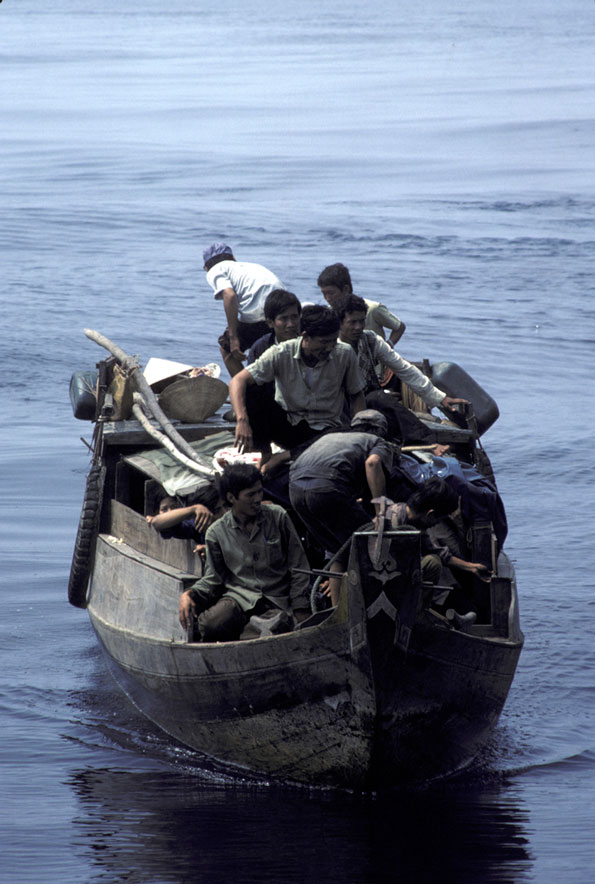Description
This is a colour photograph of a small open wooden boat packed with at least ten Vietnamese 'boat people' and their belongings. The boat's hull extends well above the water, but there is no cabin. The photograph was taken in the South China Sea on 1 January 1982.
Educational value
- Large numbers of people fled by land and sea from southern Vietnam in the years following the victory of the communist Vietcong in the Vietnam War (1959-75). Known as 'boat people' those who fled by sea numbered about 75,000 in 1981, about the same as had fled in 1980. They were generally people who had fought against the Vietcong or who had other links to the South Vietnamese Government and feared retribution.
- Attack by pirates in the South China Sea was a major risk for those who fled from southern Vietnam by boat. The Office of the United Nations High Commissioner for Refugees reported that according to evidence collected in 1981 half of all boat people had been subjected to assault or robbery while still at sea. It said numerous cases involving murder and abduction had also been recorded. International antipiracy measures did not start to have an effect until 1982.
- Many Vietnamese boat people lived for years in crowded camps in Hong Kong and South-East Asia. The camps provided basic food and sanitation, but the residents had to endure the anguish of being separated from their homeland and often their loved ones. As well, they daily faced uncertainty about their future. Australia eventually became one of the main countries for resettlement from the camps.
- In 1976-81, 2,200 Vietnamese refugees in 55 boats not much bigger than the one shown succeeded in reaching Australia. Because the Australian Government had backed the defeated South Vietnamese in the Vietnam War many Australians believed the nation had an obligation to take in boat people and refugees in camps. In 1976, the year after the war ended, there were just over 2,400 Vietnamese-born people in Australia; by 1981 there were more than 41,000.
- In 1982 scenes of overcrowded boats and distressed Vietnamese refugees became far less common when some countries, including Australia, reached agreements with the Vietnamese Government to allow refugees to leave by air under the Orderly Departure Program. Such programs were designed to reduce the number of boat people. Just over 10,000 refugees left Vietnam by air in 1982 to join their families who had already been resettled in other countries.
- The refugees in the photograph were helped by a French organisation, Médecins du Monde, which was formed in 1980 by healthcare professionals who wanted to help vulnerable people throughout the world, particularly with medical care. In the 1980s the organisation chartered vessels to help rescue Vietnamese boat people in the South China Sea, often working in conjunction with the French navy.
